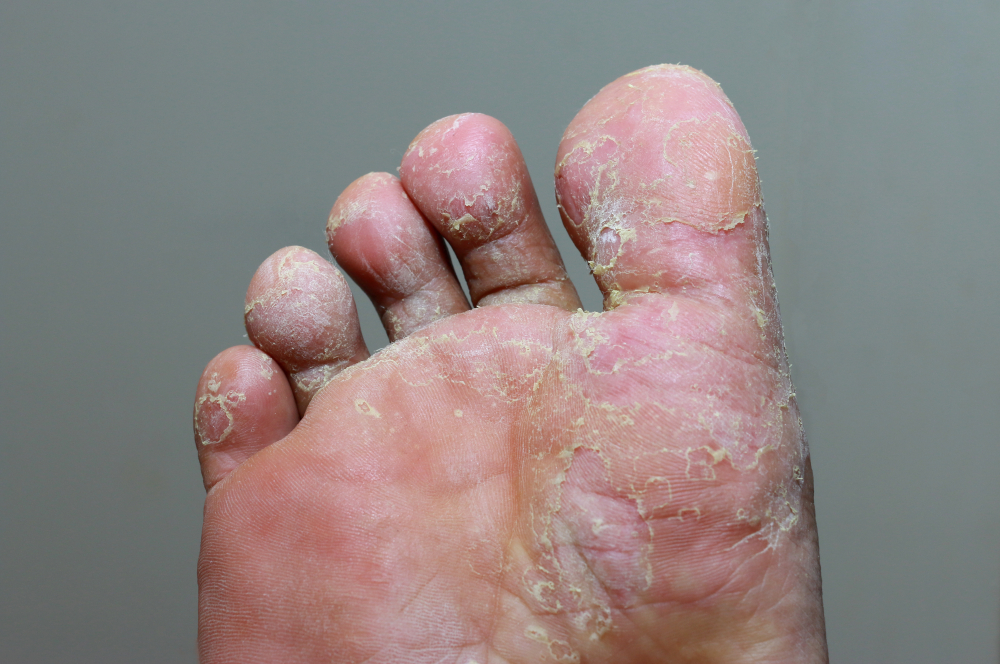Athlete’s foot is a fungal infection that targets the skin on your feet, causing itching, burning, and redness. It’s quite common and spreads easily in warm, damp places like gym changing rooms and swimming pools.
Athlete’s foot is highly contagious, and without treatment, it can spread to other areas of your body and even to other people.
Beyond the discomfort, the itching and pain can make it hard to focus on anything else, let alone enjoy activities like sports or exercise.
The good news is, with the right treatment and precautions, you can manage athlete’s foot effectively and get back to your routine. Let’s explore some fast and effective ways to do just that.
How to get rid of athlete's foot fast?
Use antifungal medications
One of the fastest ways to treat athlete’s foot is by using over-the-counter antifungal creams, sprays, or powders.
These products contain active ingredients like clotrimazole, terbinafine, or miconazole, which target the fungus responsible for the infection.
Follow the instructions on the product label carefully and apply the medication to the affected areas as directed.
Keep your feet clean and dry
Fungi thrive in warm, moist environments, so keeping your feet clean and dry is essential for speeding up the healing process.
Wash your feet thoroughly with soap and water every day, making sure to dry them completely, especially between the toes.
Avoid wearing damp socks or shoes, and consider using antifungal foot powders to help keep your feet dry throughout the day.
Change your socks and shoes regularly
Wearing the same pair of socks and shoes every day can create a breeding ground for fungi.
To prevent reinfection and promote faster healing, change your socks and shoes regularly, especially if they become damp or sweaty.
Opt for breathable, moisture-wicking socks and shoes made from natural materials like cotton or leather.
Use vinegar soaks
Vinegar has natural antifungal properties that can help kill the fungus causing athlete’s foot.
Try soaking your feet in a mixture of one part vinegar to four parts water for 10-15 minutes each day. Pat your feet dry afterward and apply an antifungal cream or powder.
Keep your feet safe
In addition to keeping your feet clean and dry, practising good foot hygiene can help prevent the spread of athlete’s foot and promote faster healing.
Trim your toenails regularly, avoid walking barefoot in public areas, and wear sandals or shower shoes in communal showers and pool areas to reduce your risk of exposure to the fungus.
Frequently asked questions about athlete’s foot
What are the symptoms of athlete's foot?
Symptoms of athlete’s foot include itching, burning, and redness between toes or on the soles of feet.
How contagious is athlete's foot?
Athlete’s foot is highly contagious and can spread through direct contact with infected skin or contaminated surfaces.
What are the best treatments for athlete's foot?
The best treatments for athlete’s foot typically involve antifungal medications, such as creams, sprays, or powders, along with proper foot hygiene and keeping the affected area clean and dry.


